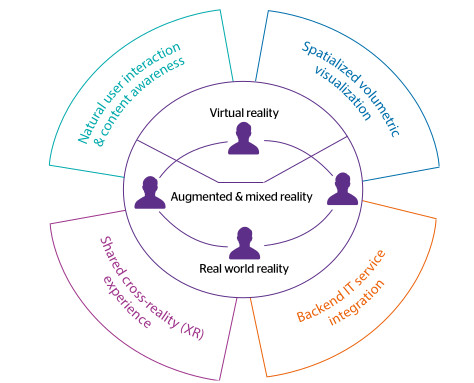
Cloud Computing
July 20, 2017
Partners of Success
July 20, 2017
Al rowad Hub
Beyond the Horizon
Automotive industries
Offering navigation and information support for car drivers through spatial head-up displays. Virtual content visualization will be spatially aligned with the driver’s environment giving a more natural presentation of information.
Engineering and Manufacturing
Using virtual prototyping to cut down development costs and time-to-market. With the ability to blend real-size virtual models into a real-world environment, virtual prototypes have the potential to replace their physical counterparts. Virtual model dynamics and Hardware-in-the-Loop simulation will facilitate fully digital testing and product demonstration. Collaborative engineering, remote marketing and even sales activities will be transformed.
Healthcare and Life sciences
Utilizing the potential of spatial computing to transform patient files into patient digital twins. These avatars will be constructed using data from body scanning technologies and monitoring devices. They will allow remote patient consultation and care using shared patient models to improve the understanding of medical treatments. Holo-overlays of patients with avatar models will facilitate surgery preparation and remote support for operations.
Telco, Energy & utilities, Smart cities
With the wide range of applications, we do not expect a common platform or unified technology stack for spatial computing. Instead open reference architectures, standards, products and software development kits will emerge. The resulting capabilities will be a strong differentiator to enhance products, offerings and business services.
Tomorrow’s advances in visualization and digital interaction will be radically different from what we have
grown accustomed to through conventional interfaces.

